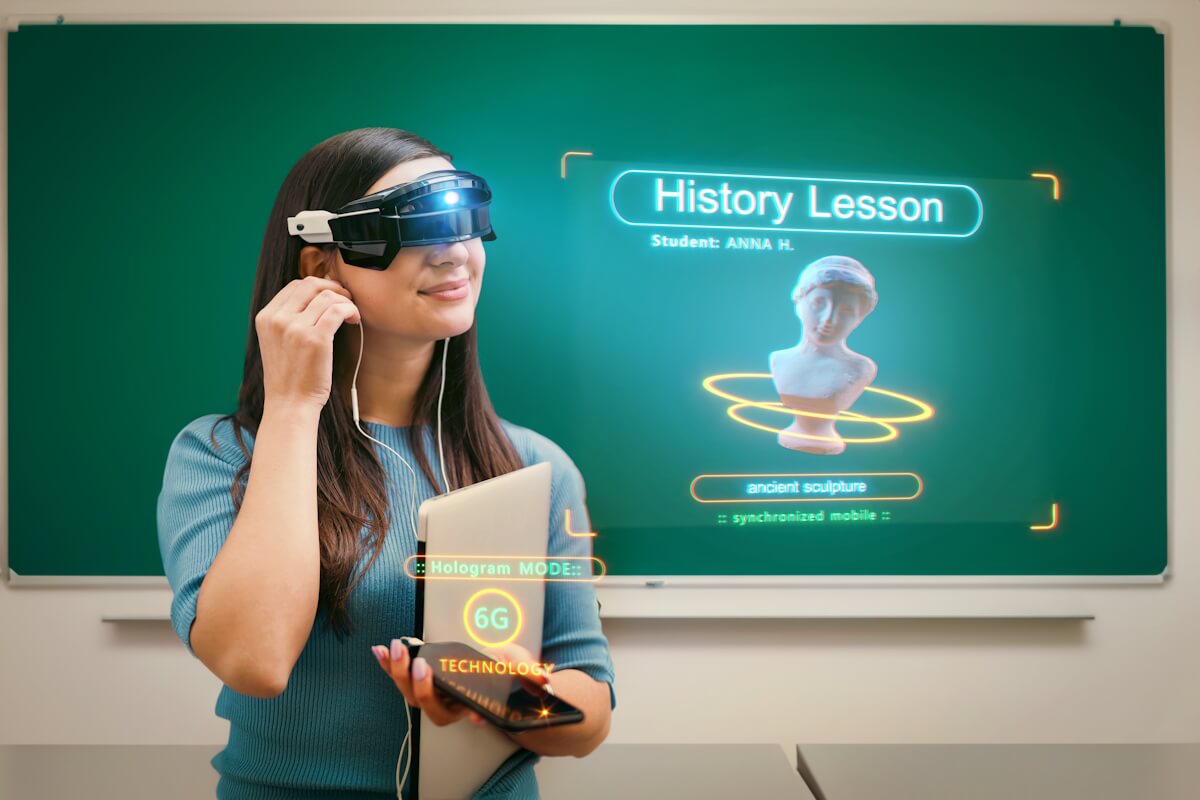Augmented Reality (AR) has revolutionized the way we interact with technology, and its impact on the education sector is no exception. With the advancement of AR technology, educators are now able to create immersive learning experiences that were once unimaginable. In this article, we will explore the trends of integrating AR in iPhone apps for education, with a focus on Palo Alto.
The Rise of AR in Education
Augmented Reality (AR) has gained significant traction in the education sector, thanks to its ability to enhance learning and engagement. By overlaying digital content onto the real world, AR provides a unique and interactive learning experience for students. In recent years, the integration of AR in iPhone apps has become increasingly popular among educators in Palo Alto and beyond.
The rise of AR in education has been fueled by its ability to transform traditional teaching methods into dynamic and engaging experiences. With AR, students can interact with virtual elements in real-time, making learning more immersive and memorable. This technology has the potential to cater to various learning styles and preferences, ensuring that every student has the opportunity to excel.
Moreover, AR in education has been shown to improve knowledge retention rates by providing hands-on learning experiences. By allowing students to visualize complex concepts and interact with them in a tangible way, AR helps solidify their understanding and memory of the subject matter. This can lead to better academic performance and a deeper grasp of the material being taught.
In addition, the rise of AR in education has opened up new possibilities for personalized learning experiences. Educators can tailor AR apps to meet the individual needs and interests of students, providing a more customized approach to education. This level of personalization can help students stay engaged and motivated, leading to improved learning outcomes and overall academic success.
Benefits of Integrating AR in Education
There are numerous benefits to integrating AR in education, especially through iPhone apps. Some of the key advantages include:
- Enhanced student engagement: AR technology captures students’ attention and makes learning more interactive and enjoyable.
- Improved retention of information: By visualizing abstract concepts through AR, students are more likely to remember and understand the material.
- Personalized learning experiences: AR apps can be customized to cater to the unique needs and preferences of individual students.
- Real-world application of theoretical concepts: AR bridges the gap between theory and practice, allowing students to apply their knowledge in real-life scenarios.
- Accessibility for students with diverse learning needs: AR can accommodate different learning styles and abilities, ensuring that all students have equal access to educational resources.
Incorporating AR in education has the potential to transform traditional teaching methods and revolutionize the learning experience for students. By leveraging the benefits of AR technology, educators can create a more engaging and effective educational environment that fosters academic growth and success.
Trends in AR Integration in iPhone Apps for Education
In Palo Alto, educators and developers are constantly exploring new ways to integrate AR into iPhone apps for educational purposes. Some of the current trends in AR integration include:
- Virtual labs for science experiments: AR allows students to conduct virtual experiments in a safe and controlled environment, enhancing their understanding of scientific concepts.
- Interactive history lessons through AR simulations: By immersing students in historical events through AR, educators can bring the past to life and make learning history more engaging.
- Language learning through real-life scenarios: AR apps can create simulated language immersion experiences, enabling students to practice their language skills in authentic contexts.
- AR-enhanced textbooks for a more dynamic learning experience: Textbooks with AR features can provide interactive content, videos, and animations that supplement traditional learning materials.
- Gamification of educational content through AR elements: By incorporating game-like elements into educational apps, AR can make learning more fun and motivating for students.
The integration of AR in iPhone apps for education is constantly evolving, with new trends and innovations emerging to enhance the learning experience for students. By staying abreast of these trends and incorporating them into their teaching practices, educators in Palo Alto can provide students with a cutting-edge education that prepares them for success in the digital age.
Case Studies of Successful AR Education Apps in Palo Alto
Several educational institutions in Palo Alto have successfully integrated AR into their iPhone apps to enhance the learning experience. Some notable case studies include:
- Stanford University: Stanford has developed an AR app that allows students to explore complex scientific concepts through interactive simulations. This hands-on approach to learning has been shown to improve students’ understanding and retention of scientific principles.
- Palo Alto Unified School District: The district has implemented AR technology in its language learning programs, enabling students to practice real-life conversations in different languages. This interactive language learning experience has boosted students’ language proficiency and cultural awareness.
- Palo Alto Research Center (PARC): PARC has created an AR-enhanced textbook that provides students with a more engaging and interactive way to learn about historical events. By incorporating AR features into the textbook, students can immerse themselves in history and gain a deeper understanding of past events.
These case studies highlight the diverse applications of AR in education and demonstrate the positive impact it can have on student learning outcomes. By leveraging AR technology in their educational apps, institutions in Palo Alto are paving the way for a more interactive and effective approach to teaching and learning.
Best Practices for Integrating AR in iPhone Apps for Education
To ensure the successful integration of AR in iPhone apps for education, educators and developers in Palo Alto should follow some best practices, including:
- Understanding the learning objectives before implementing AR technology: Educators should clearly define the educational goals they aim to achieve through AR integration.
- Ensuring that the AR content aligns with the curriculum: AR apps should supplement and enhance the existing curriculum, rather than detract from it.
- Providing proper training and support for teachers and students: Educators and students should receive training on how to use AR apps effectively to maximize learning outcomes.
- Regularly evaluating the effectiveness of the AR integration through feedback and assessments: Continuous assessment and feedback can help identify areas for improvement and ensure that AR technology is enhancing the learning experience.
By adhering to these best practices, educators and developers can maximize the potential of AR technology in iPhone apps for education and create a more engaging and effective learning environment for students in Palo Alto and beyond.
Conclusion
Integrating AR in iPhone apps for education is a trend that is gaining momentum in Palo Alto and beyond. By leveraging the power of AR technology, educators can create immersive and engaging learning experiences that cater to the diverse needs of students. As the technology continues to evolve, we can expect to see even more innovative uses of AR in the education sector in the future. Contact us today to start building your iOS app and be a part of this exciting revolution. The possibilities are endless, and the impact is immeasurable. So let’s take on this challenge together!
FAQs:
1. What are some benefits of integrating AR in education through iPhone apps?
- Some benefits include enhanced student engagement, improved retention of information, personalized learning experiences, real-world application of theoretical concepts, and accessibility for students with diverse learning needs.
2. What are some current trends in AR integration in iPhone apps for education in Palo Alto?
- Trends include virtual labs for science experiments, interactive history lessons through AR simulations, language learning through real-life scenarios, AR-enhanced textbooks for a more dynamic learning experience, and gamification of educational content through AR elements.
3. Can you provide examples of successful AR education apps in Palo Alto?
- Some examples include Stanford University’s AR app for exploring scientific concepts, Palo Alto Unified School District’s AR language learning programs, and Palo Alto Research Center’s AR-enhanced textbook for history learning.
4. How has AR revolutionized the education sector in terms of creating immersive learning experiences?
- AR has revolutionized education by overlaying digital content onto the real world, providing students with a unique and interactive learning experience that enhances engagement and allows for personalized learning experiences.










